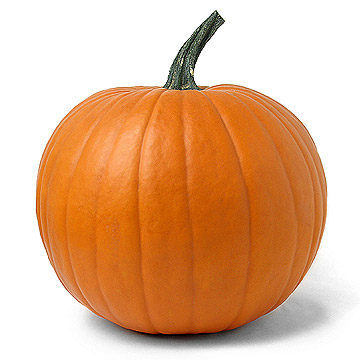
Step 1: Select & Buy Pumpkin
This fall favorite makes a nutritious, beta carotene-rich addition to baby's diet. Similar in flavor to a squash, pumpkin is a beautiful accompaniment to less-sweet veggies such as zucchini and green beans, and it also marries well with fruits and meats. Look for an unblemished pumpkin that is heavy for its size, and is between two and five pounds. If purchasing a package of peeled, cut pumpkin, be sure the pumpkin is a rich, deep orange color. A two-pound pumpkin yields about 28 ounces of puree.
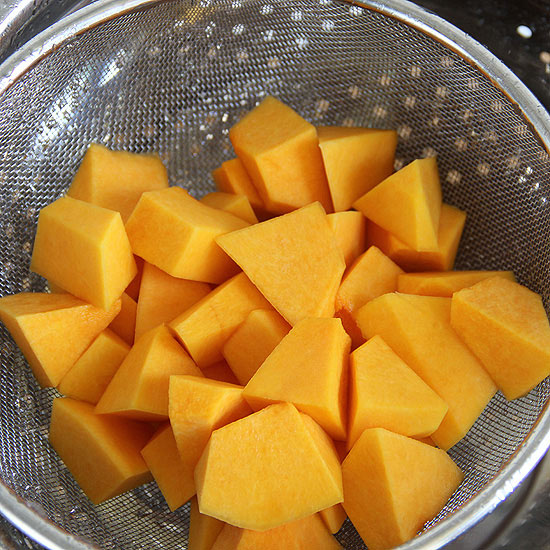
Step 2: Wash and Prep the Pumpkin
Rinse the pumpkin in cold water. Scrub the skin with a small vegetable brush to remove dirt. Rinse again. If you've purchased pre-peeled and cut pumpkin, place in a colander and rinse with cold water.
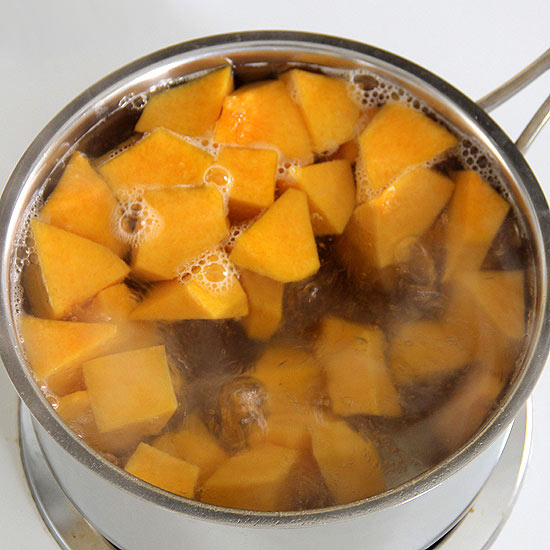
Step 3: Cook the Pumpkin
Whole pumpkin: Cut pumpkin in half. Scoop out the seeds with a spoon and save for roasting or discard. Brush each half with olive oil and place skin-side down in a baking dish. To keep the flesh of the pumpkin moist, add a half-inch of water before baking. Bake at 450?F. until pumpkin is tender, about 45 minutes. Remove from oven, and scoop the flesh into a bowl.
Peeled and cut pumpkin: Bring water to a boil in a medium saucepan. Cook diced pumpkin until tender, about 15 minutes. Drain and rinse under cool water for about three minutes to stop the cooking process.
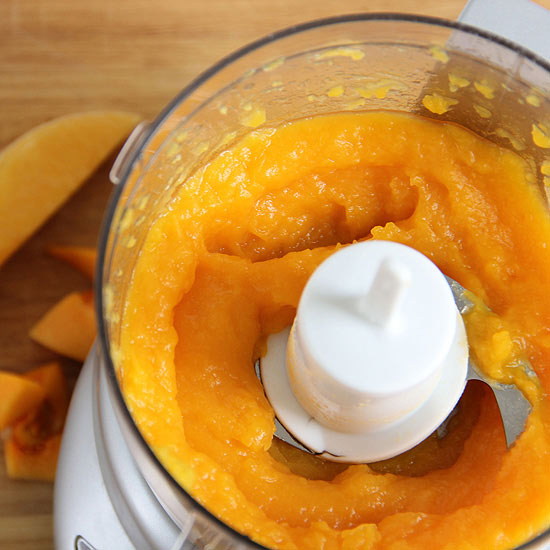
Step 4: Puree the Pumpkin
Puree cooked pumpkin in a food processor or blender until smooth. Add water, or, for extra creaminess, breastmilk or formula, as needed to reach desired consistency. Once baby is ready for finger foods, typically around 10 months, you can serve her pumpkin that's been cooked and cut into tiny pieces.
Step 5: Serve Pumpkin Puree
Like butternut squash, pumpkin is very mild. Add flavor by mixing it with less-sweet veggies, rich meats, or fruits. Try mixing pumpkin with:
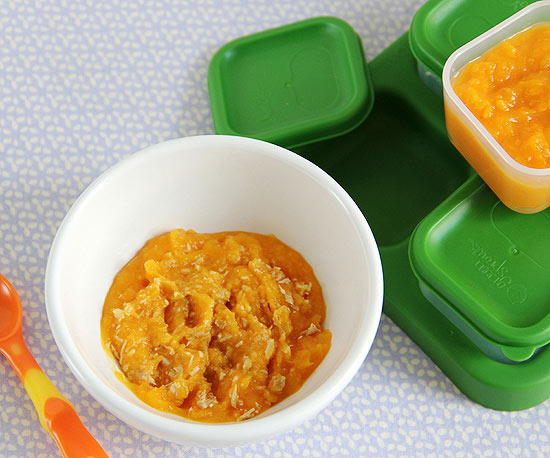
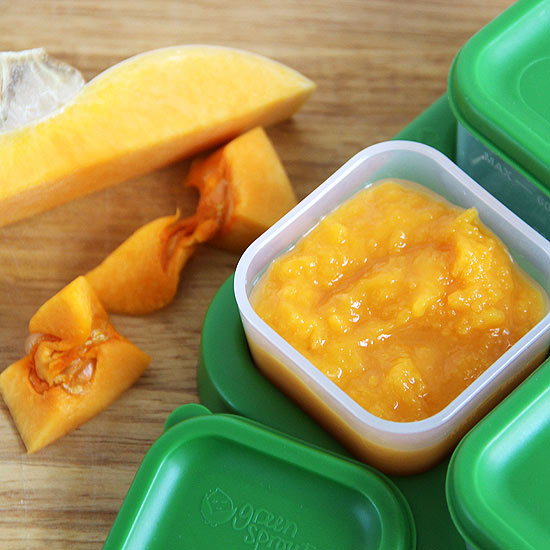
Step 6: Refrigerate or Freeze Leftover Pumpkin Puree
Cool pumpkin puree and refrigerate leftovers in BPA-free containers for up to 3 days. Freeze leftovers for up to 3 months. Thaw overnight in your refrigerator.
Note: Always check with your pediatrician before introducing your baby to a new food, particularly if your baby has food allergies. Additionally, some pediatricians do not recommend making your own carrot, beet, or spinach puree because these fresh veggies can be higher in nitrates.
Copyright © 2012 Meredith Corporation.
